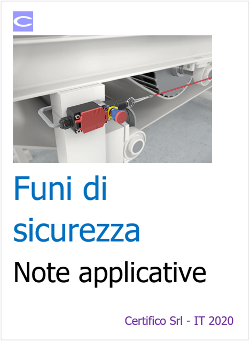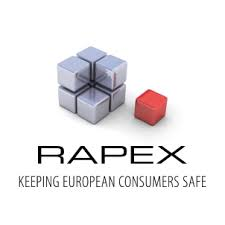Informazione tecnica HSE / 25 ° anno
/ Documenti disponibili:
45.701
/ Documenti scaricati: 34.750.867
/ Documenti scaricati: 34.750.867
Commissione Europea, 19 Dicembre 2017
Regulation (EC) N° 765/2008 (hereinafter also referred to as ‘the Regulation’) setting out the requirements for accreditation and market surveillance relating to the marketing of products and repealing Regulation (EEC) N° 339/931 has been applicable since 1 January 2010. The Regulation has the strategic objectives of ‘strengthening the protection of public interests through the reduction of the number of non-compliant products on the EU Internal Market and ensuring a level playing field among economic operators’, providing a framework for market surveillance and product control.
The evaluation
The evaluation performed aimed at understanding to what extent the Regulation has achieved its original objectives in terms of effectiveness, efficiency, relevance, coherence, and EU added value. Moreover, it analysed the practical implementation of the Regulation in EU Member States and assessed the product market within the scope of the Regulation.
This evaluation also aimed to contribute to the identification of the relevant set of actions supporting this Regulation within the framework of the Single Market Strategy.
Effectiveness
The evaluation concluded that the Regulation is not fully effective.
In particular, although a plethora of coordination and communication mechanisms and tools for information exchange exist within and between the individual Member States and with third countries, these do not work efficiently or effectively enough (e.g. Market surveillance authorities (MSAs) rarely restrict the marketing of a product following the exchange of information on measures taken by other MSAs; and in the context of products manufactured outside the national territory, MSAs find it difficult to contact the economic operator even if it is based in another EU Member State) (see section 6.1.1 - Cooperation and coordination). Moreover, Member States have implemented the Regulation in many different iterations, with substantial variations in terms of organisational structures, level of resources deployed (financial, human and technical), market surveillance strategies and approaches, powers of inspection, and sanctions and penalties for product non-compliance (see section 6.1.1 - Uniform and sufficiently rigorous level of market surveillance). Finally, although Customs’ powers are perceived as adequate and procedures for border controls are clear and appropriate, checks on imported products are still considered inadequate in light of increasing import from third countries – particularly China – and online sales (see section 6.1.1 – Border controls of imported products). All these elements have had an impact on achieving uniform and sufficiently rigorous
controls. Thus, they have also had an impact on the effectiveness of the measure in achieving its objectives in terms of protecting public interests and the level playing field for EU businesses.
The Regulation’s effectiveness towards achieving its objectives is also thrown into question by the increasing number of non-compliant products included in its scope, as demonstrated by the rising number of RAPEX notifications and restrictive measures taken by MSAs. An important reason for product non-compliance in the internal market seems to relate in particular to a lack of knowledge among economic operators about the applicable legislative requirements.
Efficiency
The Regulation introduces costs for Member States and, to a more limited extent, for economic operators. The former are related to organisational, information, surveillance, and cooperation obligations; costs for economic operators relate to information obligations, as defined in Article 19 of the Regulation.
The budget allocated to MSAs in nominal terms varies considerably from one Member State to another. These differences might be related to the fact that Member States have different organisational models requiring different levels of financial resources. However, another possible explanation might be sought in the different approaches followed by MSAs in reporting data on the level of financial resources used and on activities performed.
The fact that Member States are free to define their own approaches to market surveillance created a significant variation in the way the different sectors are controlled and managed. Moreover, fragmentation of control activities throughout the internal market may interfere with timely action by the authorities and cause additional costs for businesses.
As regards costs for economic operators, information costs are not perceived as significant although some cross-border inconsistencies still remain and the current enforcement mechanism is unable to create a level playing field for those businesses marketing products in the internal market. This might reduce businesses' willingness to comply with the rules and discriminate against businesses that abide by the rules and those who do not.
The analysis of RAPEX database and of national reports highlighted that product noncompliance increased consistently from 2006-2009 to 2010-2015.
The limited cost effectiveness of the market surveillance provisions is confirmed by the fact that neither the average annual budgets allocated to MSA activities nor their variation during the period 2011-2013 correlate with the size of the market (i.e. number of enterprises active in the harmonised sectors).
Fonte: Commissione Europea
Correlati:

ID 14611 | 25.09.2021 / Documento di lavoro completo in allegato
Documento sui guanti di protezione per saldatori DP...

ID 9974 | 05.02.2020
Il documento allegato analizza i casi in cui sia necessario l’uso dei dispositivi sensibili alla pressione, nello specifico le funi di sicurezza.

Report 32 del 12/08/2022 N. 29 A12/01135/22 Finlandia
Approfondimento tecnico: Racchetta padel
Il prodotto, di marca Karhu, barcode 6438428810057...
Testata editoriale iscritta al n. 22/2024 del registro periodici della cancelleria del Tribunale di Perugia in data 19.11.2024